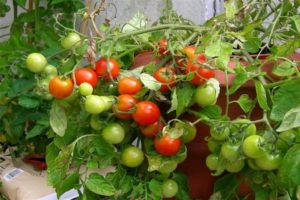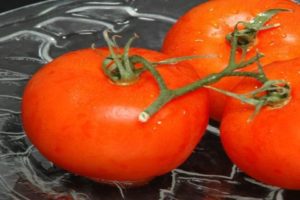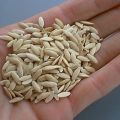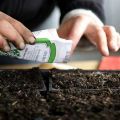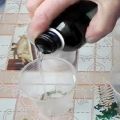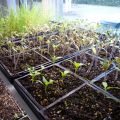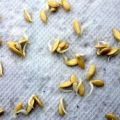How can you check and determine the germination of tomato seeds
A necessary prerequisite for obtaining a high yield of tomatoes is a conditional planting material, an indicator of which is germination. Summer residents, especially young ones, sometimes do not know how to check the germination of tomato seeds and determine how suitable they are for use. Germination is the ratio of the number of germinated primordia to the total number of sown seeds, expressed as a percentage and characterizing the ability to germinate.
Quality factors and testing time
Tomato seeds do not lose their strength for 5 - 7 years under appropriate conditions. Germination preservation parameters:
- time from the moment of harvesting fruits and harvesting seed material;
- storage conditions;
- the degree of infection by painful bacteria and microbes;
- correct preparation for sowing.
Pre-sowing check of seeds allows you to timely, quickly improve their quality or completely replace. Germination is assessed in advance. The term is determined based on the time from sowing to germination. This period is on average 8 - 10 days. With such a lead time before the planned sowing, testing begins.
How to determine the suitability of seeds purchased in stores, markets, and other places? The technique of the procedure can be carried out in two ways.
The first way
The germination test begins with the calibration of the seed. This process involves selecting for germination samples with a high content of nutrients capable of producing quality tomatoes.
For this, the seed mass is poured with a 3 - 5% solution of common salt (15 - 25 grams / 500 ml of water). After 2 hours, empty, ugly, wrinkled particles are removed from the surface, discarded. Large and medium-sized grains are selected, washed, dried. Practice shows that small specimens, if they are healthy, full, can be used and will bear fruit. As a result of determining the number of seeds settled to the bottom, a conclusion is made about the potential germination.
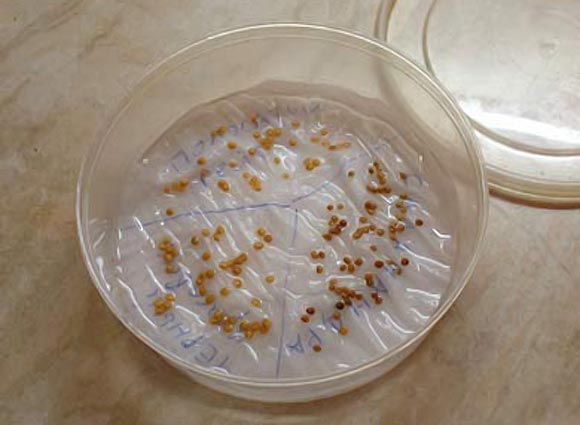
Sampling can be done with an electrified plastic object, plexiglass or ebonite wiped with a woolen cloth. The test material is scattered on a smooth surface, the plastic is brought closer to a distance of 1 - 2 cm - it collects a feeble, incomplete, light mass. The procedure is repeated several times. By the number of seeds that do not stick to the plastic, you can recognize and evaluate the quality of the entire batch.
The calibration method is widespread. It is used immediately before sowing, many summer residents immediately after that start sowing for seedlings.
Second way
Allows you to determine the germination of seeds by soaking, germinating, sowing in the ground. Sequencing:
- A dozen randomly taken seeds are wrapped in natural cloth, filled with water for 24 hours.
- The contents are laid out on a platter, insulated with foil.
- All this is placed in a warm place. Moisten the fabric regularly to keep it dry.
It is useful to use melt water instead of ordinary boiled water. After a few days, pecking will occur, the formation of roots.

On a note! The temperature during this period should be at least 22 - 25 ºC.
By the number of sprouted roots, the degree of germination and germination energy of the embryos, speed, friendship, and viability of seedlings are assessed. For greater confidence and accuracy, seedlings are planted in a container with warm, moist soil. When shoots emerge on the surface of the earth, the indicators are specified.
How to check the germination percentage of tomato seeds? It's simple. For example, 8 out of 10 seeds have sprouted, the germination rate is 80%. The indicator for the entire batch will be more accurate if a larger amount of material is taken for verification.
In this way, they test newly purchased, old expired bags left over from previous years. Before throwing them away, check them for a short time for germination.
Vegetable growers-practitioners believe that you should not be upset if the germination rate is not 100% in the garden - this is not even for conditioned specimens. According to research, tomato seeds with a 3 - 4-year shelf life have a germination rate of 60 - 85%. If the value is less than 50%, sowing is not recommended.
It is interesting! Purchased seed packs always indicate a high germination value, up to 98%. This is a laboratory indicator, which is determined under ideal conditions, which are almost impossible to recreate in the country. On his site, the gardener deals with a field value, which is much less.
Tomatoes have many varieties, varieties, hybrids, each with its own characteristics and requirements. Actual performance under actual circumstances may differ from those shown. This is evidenced by reviews of summer residents confirming the need for sowing proven seeds.
Features of pre-sowing treatment
You can improve germination and germination using some preliminary preparation techniques:
- disinfection, disinfection;
- processing with microelements;
- use of stimulants.
For disinfection, a 1% solution of potassium permanganate (5 grams / 500 ml of water) is used. A gauze bag with tomato seeds is placed in a solution, washed and dried after 20 minutes. The method is popular among summer residents, it increases the germination of tomato seeds after disinfection.
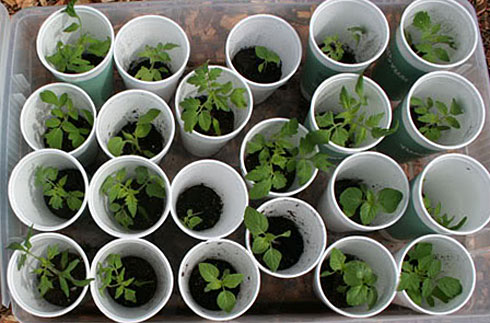
Important: the processing time with potassium permanganate should not be exceeded - this reduces the amicability of the seedlings.
The effective disinfecting effect of the biological product "Fitosporin" was noted. Apply it in accordance with the instructions of the instructions. After disinfection, tomato seeds are treated with ready-made compositions of trace elements, you can use a daily infusion of ash by dissolving 1 teaspoon in 250 ml of water.
The seeds are kept for 5 hours, washed, dried. Acceleration of germination is achieved by treatment with biologically active substances, growth stimulants "Immunocytofit", "Energen", "Epin-Extra" or "Zircon". Boric or molybdenum compounds have a positive effect on seeds.
When using trace elements, you should strictly adhere to their dosage. Exceeding the concentration of the solution, prolonging the procedure time can lead to a deterioration in the growth energy.
A positive result was obtained by summer residents when treating seeds with aloe extract. The leaves of the plant are placed in the refrigerator for 5 days. Then the juice is squeezed out, the seed is poured into it, kept in the room for 24 hours.
So, knowing how to check the seeds, you can grow high-quality, no doubt, strong planting material, healthy seedlings.In the summer, a tomato bed will provide the gardener with a rich harvest.
